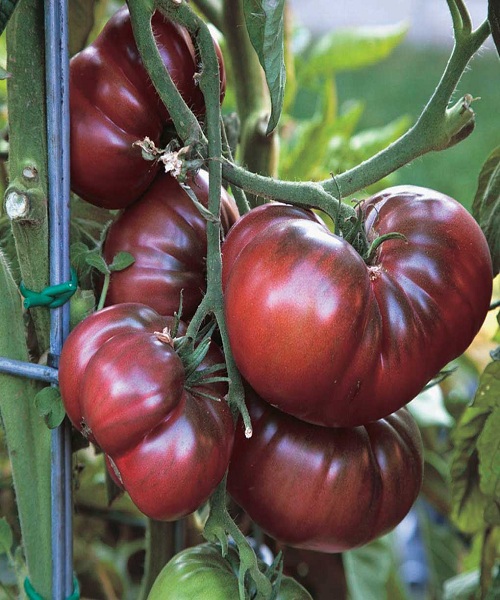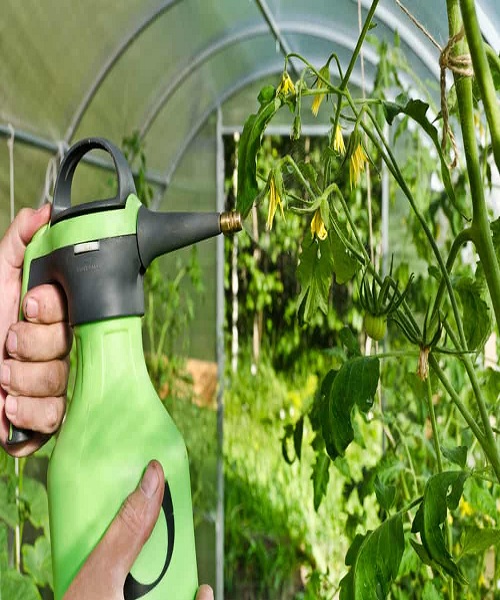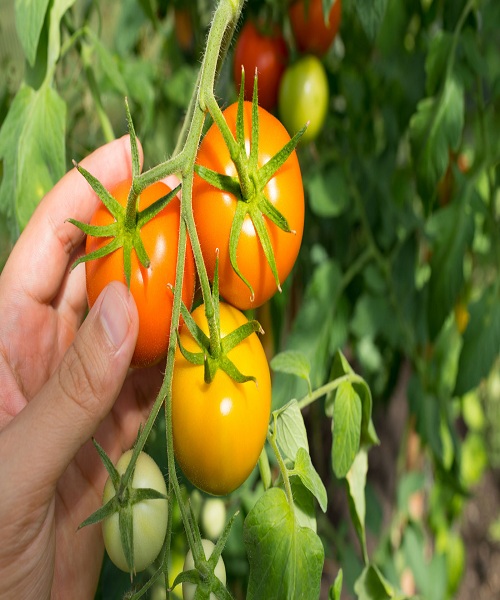Tomatoes aren’t very challenging to cultivate, but they do take some know-how to prevent typical problems. To that end, we’ve compiled a list of our top 10 tips for growing a bountiful crop of tomatoes with minimal effort, including some strategies for improving tomato nutrition to increase yields.
Select high-yielding tomato varieties
A simple recipe to follow may be to pick types with a long harvesting season, few days to maturity, and vining or indeterminate growth behavior. If you manage things this way, you might be able to increase the yield of your tomatoes significantly.
A few examples of high-yield tomato species are the Stupice, Black Krim, Sungold, Big Beef, and Celebrity kinds.

Tomatoes should be planted in the sunniest areas
If you want your tomato crop to succeed, you need to make sure it gets as much sun as possible.
In sunny places, tomato plants will produce more blooms and ripen sooner.
Feed Your Tomatoes
Get started with a top-notch soil. Or, to put it another way, your soil needs to be able to hold nutrients and moisture. Compost and worm castings can be added to soil to improve its general availability of nutrients. A nutrient-rich, humus soil is ideal for tomatoes.
- Phosphorus: Essential for Strong Roots and Bountiful Blooms
Roots and flowers depend on the macronutrient phosphorus. Flowers lead to fruit, therefore it stands to reason that phosphorus is critical for producing edible fruit.
Phosphorus is also unique in certain ways. Phosphorus-rich substances must be accessible to the roots. So, make sure your plants can get their hands on some phosphorous.
Bone meal and ground rock phosphate both are great phosphorus sources. You can use these in your organic garden without any worries.
Such phosphorus-containing products can be amended directly in the planting hole. As the season progresses and your plants begin to bloom, you may also incorporate them into the soil around your plants by gently cultivating them once or twice.
- Foliar Spray
The use of foliar sprays is an excellent method of providing your tomato plants with the several micronutrients they need to produce delicious and healthy fruit. You should prioritize finding organic and all-natural sprays. Thus, your edible fruit will be free of any traces of artificial chemical fertilizers.

Help pollinate tomato flowers to get more fruit: 3 different ways
- Shake your tomato flowers!
In the beginning, it seems a bit ridiculous. It is true that shaking your tomato blooms will help to pollinate your plants.
Unbelievably, tomato blooms can pollinate themselves. That’s right; each blossom acts as both a male and a female. By gently shaking the blossoms, you can encourage early fruiting in your tomato plants.
- Encourage Pollinators
Pollinating insects are irreplaceable in agriculture.
Of course, bees are among the most crucial to encourage. Most notably, there are several insects that support our plants in the garden and do so in a variety of ways. The process of pollination is only the beginning. Therefore, pollination is the most important factor in the transformation of flowers into fruit.
Pollinating insects are crucial to the success of a tomato crop, and companion planting is one strategy for attracting them.
- Don’t use poisonous pesticides
Insects and other pests can cause problems in a garden. The remedy, however, may be even more harmful than the illness itself. Pesticides not only compromise the health benefits of the tomatoes we wish to consume, but they also threaten the beneficial insects we need to attract to the garden.
Surprisingly, several non-hazardous strategies exist for eliminating unwanted pests. The first stage in pest control is making a proper identification of the pest at hand. In addition, look for non-hazardous methods of pest management. This way, you won’t have to resort to using potentially dangerous pesticides.

Prune Tomato Plants Properly
There are essentially two types of tomatoes, and thus two broad categories of pruning.
- Determinate Tomatoes, AKA Bush Types
Determinate tomato plants typically don’t need much pruning. To be more specific, determinate tomatoes reach a fixed size. Also, they typically only bear a certain number of fruits per season. It is possible that pruning will reduce the production of certain tomato varieties.
Pruning is not advised for determinate tomato plants. It’s not a bad idea to rake up any leaves that have become damaged or rotten.
- Indeterminate Tomatoes, AKA Vine Types
Tomatoes that are indeterminate, on the other hand, seem to expand indefinitely. Each node in a branch can give rise to a new offshoot.
By cutting down each plant to just two to five main stems, you can coax it into producing an abundance of fruit. Vegetative expansion can also be suppressed by regularly cutting off new suckers as they emerge from the leaf nodes. In a major way, this raises the yield and number of fruits produced by each plant.

Support Your Tomato Plants
Getting better yields is a major reason why this is so crucial. This, of course, is highly dependent on the growing method and tomato variety used. As a corollary, this will also influence the type of reinforcement employed. Certain types of bush or determinate tomatoes benefit from staking or cages. However, sturdy supports like wire fencing may be required for certain vine or indeterminate tomato plants.
Pick Early
Have you tried everything to get your tomato plant to produce more tomatoes? Get things rolling by snagging your first ripe tomato or two as soon as they appear. Some gardeners even go so far as to remove the first whole blossom cluster! It’s interesting to note that this triggers the tomato plant to begin fruiting.
Tomatoes are best picked at their first sign of color. This can be done instead of waiting for them to ripen on the vine.
When ripened at room temperature, such as in a sunny window, harvested tomatoes keep their superb flavor.
In doing so, you prevent pests like birds from destroying your crop. Most importantly, keep in mind that tomatoes should never be refrigerated. Unfortunately, a lot of flavor is lost in the process.


